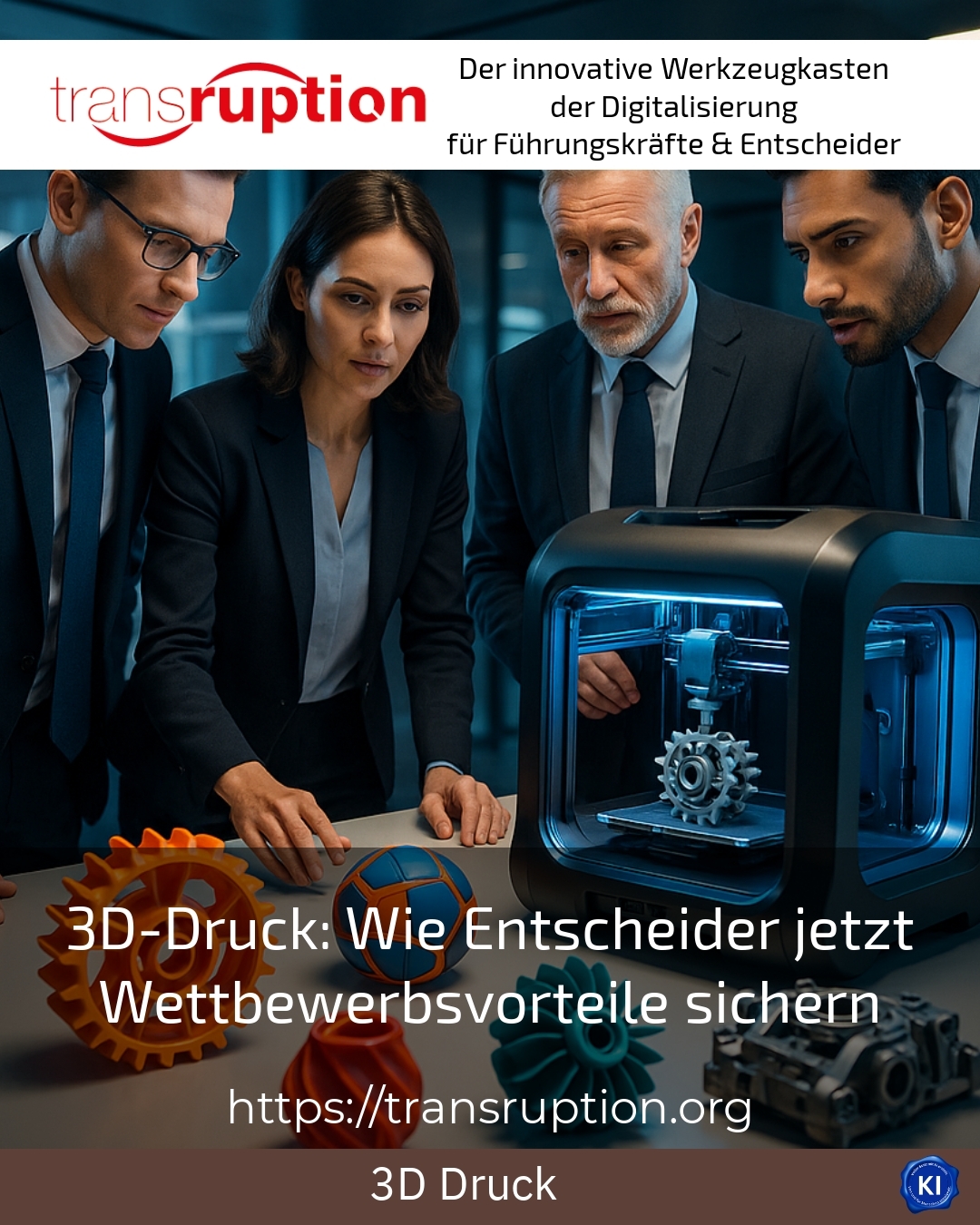Conversion of the car parts and spare parts industry
Digital disruption is a major topic in many industries. It means that the wishes of many customers in the area of communication and transparency are finally being heard.
The upheaval in the automotive parts and spare parts industry is also unstoppable. Many companies have already undergone the digital transformation and can benefit from the advantages.
Digital transformations are important
A disruption is a transformation or interruption. In this case, it refers to the corporate strategy, which is very outdated in many areas of workshop equipment. A normal change due to new systems or computers is completely normal in any industry. These changes do not take much time, but are simply part of the process over time. Digital transformation is completely different. Thanks to the latest technologies, customers have the opportunity to use many of the provider's services themselves. There are no longer different online and offline channels available; instead, special emphasis is placed on transparency and clarity. Those who are already changing their business strategy in the workshop equipment sector have the opportunity to leave many competitors in the market behind. A digital transformation not only creates a new business model, but also requires employees to completely rethink their approach. The innovation should put the customer back at the centre of attention.
Old, outdated business models should be replaced today rather than tomorrow. In other sectors such as banking and insurance, disruption has already been an important topic for many months. The digital tsunami is now spreading across all sectors, meaning that the automotive parts and spare parts industry is also affected. There are also many companies in the start-up scene that have started directly with the digital approach. This gives them the advantage on the market that customers will favour these companies. Of course, this transformation involves a lot of work. This work is best done by the IT department or a professional team. However, many steps must be discussed in advance with the top management of the company. After all, digital disruption means that the entire old business model is broken up and a completely new system is set up. Depending on the extent of the disruption, this can result in high costs. If you as a workshop equipment company do not start planning digitalisation in good time, you will certainly lose some customers to the more modern providers.
Digitalisation has left its mark on some sectors, such as video stores and the music industry. While people used to buy films in video stores and music in music shops, the internet is now used to stream music and films. As a result, a large number of local music and film shops have closed, as internet users hardly bother to visit them anymore. This example can also be applied to many other sectors. This means that sooner or later every sector will be overtaken by a new system and will therefore be considered uninteresting.
As many companies in the music industry believed that the invention of the CD would only trigger a minor trend, in reality the entire record player sector was wiped off the market. Hardly any company that had previously been involved in the manufacture of record players was able to rethink quickly enough. If the companies had been sufficiently informed about the CD market, the pressing plants would probably have been used in time to produce CD players instead of record players in the future. Such a changeover is not possible overnight. Such a major change in the industry proves that it is always important to keep your finger on the pulse of the times. From then on, artists were allowed to sell their music with or without a record label. Interested parties, on the other hand, were made it easier to use music and videos in infinite numbers. The only disadvantage was for the pressing plant and the dealers of records and record players. Their entire basis was destroyed by a new technology.
The emergence of disruption
The principle of disruption was brought to life 20 years ago by Harvard graduate Clayten Christensen. This led to a period of reflection for many companies. They were ready to develop further in their field. Their own traditional business model was completely turned on its head. Any company that resists change will sooner or later always fall by the wayside in terms of the market. For some companies, this can even mean the end. It doesn't even depend on the size of the company or the type. There are already some pioneers in workshop equipment who are well advanced with their planning. While start-ups can get off to a flying start with the right expertise and system, young companies that are still relying on the old business models face a double challenge.
They have already made large investments and may have just gained a solid customer base. They are already expected to rethink again. Even if a complete digital transformation seems impossible at first glance, there are ways and means to make it happen. Many positive examples of customer-orientated and more tech-savvy customer service can be found in the insurance and banking sectors in particular. Of course, there are also many pioneers in the field of digital technology. In this area in particular, it is important to always be at the cutting edge of technology. Many digital products have already been converted to the latest technology here and customer enquiries are taken very seriously.
Customers will only benefit from the digital transformation. Even if some people who have become accustomed to a certain system first have to rethink their approach, they will ultimately be delighted with the result. Digital disruption will give all customers the opportunity to conclude contracts themselves and contact a customer advisor at any time. Of course, there are hotline services in some areas, such as internet providers, that take over this part, but a call centre doesn't really make sense for workshop equipment.
In this area, customers want to take their time to look at prices and seek advice if necessary. Advice that can be requested directly by the customer is particularly attractive to many people. Most people no longer want to be talked into a purchase by sales representatives. These customers find it much more relaxed if they can ask their questions during a video conference or an online chat. This gives them the added advantage that they only have to contact a company if they really want to.
Digitalisation of the automotive parts and spare parts industry
Digital transformation has been on everyone's lips for years. It is now unstoppable across all industries. To date, every technology has gradually evolved to the point where companies can no longer ignore it. However, technology not only brings benefits to customers, but can also benefit companies in all sectors, such as workshop equipment. In the past, a lot of work was done on paper and it was impossible to imagine running a business without punch systems or punch cards. Today, it is taken for granted that a PC or laptop is used for this purpose.
Whereas there used to be a lot of paper and a correspondingly large number of filing cabinets in offices, employees can now work more easily on their PCs. The vast quantities of copies that used to be distributed to all employees are no longer necessary. This not only saves space, but is also more environmentally friendly. Nowadays, internal e-mails are sent for this purpose. These e-mails are sent to all employees at the same time so that everyone has the same level of information. Customer data will be handled in the same way in future. Of course, this data will continue to be adequately protected from access by third parties. However, offline and online channels will be linked in order to achieve a standardised picture. Customers will also be able to access their own data using special programmes. New technologies make it much easier to communicate, interact and work.
Of course, it is important to clarify in advance which data is considered important for which area. More and more people are using the Internet to educate themselves, chat with friends or conduct business. Most Internet users use their mobile phones for this. A wide variety of apps can be used to manage contracts and orders.
Operators of workshop equipment should always bear this in mind. The more elaborate a provider's website is designed, the less likely customers with a mobile phone will find it easy to navigate. Less text and clear guidance to the important functions and facts are much more helpful for customers than a beautifully styled site. The easier a company's system is on the eye and the simpler it is structured, the longer the customer will stay on it. This is no different in the car parts and spare parts industry. Customers are unlikely to take the time to search for a specific item for any length of time. They want to be able to see at a glance what is on offer, what the customer has already ordered or how long the delivery time for the goods is. Nowadays, many orders and services are ordered by customers exclusively via the Internet. After a hard day's work, hardly anyone still feels like travelling to a local workshop equipment shop to order certain goods. A good Internet presence saves the customer an annoying search for a parking space, waiting times and time. After all, there is not one of your branches in every neighbourhood. Customers often have to travel long distances. Thanks to digitalisation, many customers no longer want to put up with this effort. Instead, they want to use their time elsewhere and are bringing entire branches to their knees as a result of these customer wishes. Digital disruption is encouraging entire industries to reorganise their systems across the entire corporate structure.
Comparison portals are favoured
Many customers are no longer prepared to pay a higher price for their car parts or spare parts because of years of loyalty. Instead, they want to pay a fair price. More and more comparison portals are being used to compare prices from other suppliers. They not only compare prices and quantities, but also focus on special offers. If certain car parts have a fixed price in the online shop, they may not be available at a lower price in the shops. In addition to pricing, a portal offers other advantages for all customers.
You can read all customer reviews in detail before ordering. Many people no longer want to be sold a product on the spot. They want to know in advance what the advantages and disadvantages of buying the product are. In most cases, customer reviews are honest opinions. In addition to delivery times and assembly problems, they also reflect the quality of an item. However, many customers also use social media to find out about certain spare parts. Here, too, they meet many like-minded people. In addition to many private individuals, there are also a large number of companies on social networks. Accordingly, the range of information is very wide.
In a digital transformation, however, it is not enough to simply expand the company's social media presence. Rather, it changes the entire business model, the value chains and, above all, the company's operational processes. Even the structure of a supplier of workshop equipment will no longer be recognisable after the transformation.
Digital transformation is essential for the survival of a successful business. If you want to stay on the market in the spare parts and automotive parts industry, you should not resist it. Digitalisation can often be explained much better by comparing it to 3D printing. 3D printing is a special, digital technology that has found favour with many people.
The innovative system has convinced many experts and specialists and has gradually won over the entire industry. It doesn't really matter which product or service the company is offering. It is simply important for every company to stand out from the crowd with a specific product in order to assert itself on the market. 3D printing is just one example of a product that has managed to find favour in a wide variety of sectors in such a short space of time. This development enables many other companies to customise their use and thus change their existing structures.
Every entrepreneur should now ask themselves how their own company should change in the future. How can digital disruption positively change the spare parts and automotive parts industry? How quickly can a company's own disruption be implemented? What resources are needed for this? But the most important question is also: What are the first steps to ensure that the company does not allow its competitors to take its place? The goal of every company should be to simply redefine service and technology in the digital age.
Cross-industry impact of digitalisation
To make it easier for your company to start digitisation, you should first take a closer look at the current situation and your goals. Of course, you also need to answer the above questions yourself. This will certainly require some teamwork. After all, the extent of the change cannot be foreseen by anyone and should therefore be carefully examined and assessed. The extent of your transformation always depends on how much you have already invested in the right direction in recent years.
To ensure that the transformation is possible despite ongoing day-to-day business, you should set up a special team for this purpose. With the help of the team, the timeline can be roughly agreed and planned. Never underestimate the challenge you will face. If you have a good hand and your customers are important to you, then you will certainly manage to carry out the disruption despite stress and a few setbacks. As you are not in an industry, such as insurance, where many competitors have already started planning or have already achieved initial success, you don't need to put yourself under any time pressure.
Depending on the size of your company, you can generally expect it to take between 3 and 5 years for everything to work the way you and your customers want it to. You should take sufficient time in advance to plan and ultimately implement a digital disruption. You will often have to reckon with resistance within your own company. After all, it is not enough for your car parts company to change; your employees also need to completely rethink their approach. This sometimes requires expensive training.
Some employees even have to be transferred to other departments. For this reason, complete digitalisation is not desired by everyone. Nevertheless, a company should not allow itself to be dissuaded from this endeavour. Experts expect that the last sectors, such as consulting companies, will no longer be able to protect themselves from digitalisation. It is important that you develop your own strategy as a car parts or spare parts company. Of course, this takes time and a little know-how. An IT department can be very helpful in determining which measures can best be implemented.
Of course, the focus should not be on the company's own expenses but on the customer's needs. Nevertheless, every company must calculate for itself the extent to which a transformation can be implemented. After all, no one wants to drive themselves to ruin, but rather to move forward.
For some companies, it is very important to find a competent partner and acquire sufficient expertise in this area. This will make it easier to keep up with the digital times in the future. Transformation is by no means the end. Technology will also continue to advance and constantly push the company to its limits. It is therefore particularly important for a company to constantly reinvent itself and be open to innovation from the outset. This demonstrates to customers that the company is at the cutting edge.
Traditional companies need to change
Digital disruption will be particularly difficult for traditional companies. They have been very entrenched in their structure for many years. In some cases, they work with employees who have been involved in building the company from the very beginning. Now it is up to the management team to take the reins and convince all employees that the previous company model is no longer relevant. Unfortunately, in today's digital world, it is no longer possible to keep your company structure as it was. Most customers are no longer prepared to visit the shop in person for every question or order.
They want to remain free and only contact their provider or branch if they want to. Insurance agents are also no longer welcome in their own living rooms. Consultations are also rarely held in bank branches. It is much easier if everything can be handled via the Internet. This gives every customer the opportunity to study all the advantages and disadvantages in detail. In addition to the car parts website, there are also many comparison portals that can be very helpful when looking for the right product or contract.
Many services can already be easily organised via the Internet. Unfortunately, changing the car parts and spare parts website is not enough to inspire customers. Rather, it is important that the entire structure of the company is dissolved.
New value chains and business models must be created in order to remain viable on the market. By changing operational processes, a lot of time can be saved in order processing afterwards. However, these processes must first be planned and implemented by the company. In many companies, it took several months just to plan the digital disruption.
Only those who have successfully completed the digital transformation have the best chance of rising to the top of the market. Some companies have gambled that they will be able to set themselves apart from other companies in the long term due to the complex regulation of the automotive parts industry. Digital disruption means that all barriers to market entry are falling. The new providers have it particularly easy. They compete with faster speed combined with favourable prices. This is naturally very well received by customers. At the same time, competition on the market within the automotive parts industry is being strongly fuelled.
Many companies are taking advantage of customers' growing desire for individualisation. They are developing their very own solutions for this and creating clearly defined areas and segments. For example, when a spare parts company enters into a partnership with a finance company, customers can enjoy favourable payment terms. A good example of this is Otto Versand. It has its own finance portal for female customers. At www.einfachanders.de, female customers have the opportunity to manage the financing of their Otto order themselves. Signal Iduna has also found a strong ally in its partner Sijox. This combination makes it much easier to appeal to younger customers in particular.
Aggregators offer many advantages
Digitisation is causing many companies throughout Germany to break out in a sweat. The advance of new providers is having a massive impact on the market. Aggregators in particular are benefiting from the digital transformation of the various sectors. Many aggregators such as Check24 or Transparo have already firmly established themselves on the market. They offer all customers the opportunity to compare prices and contracts directly with each other. This attracts many private users in particular. Nowadays, every third change of insurance policy in Germany takes place via an aggregator.
In the meantime, other business models have become established around the comparison platforms. On some platforms, a wide variety of aggregators can be linked together. When searching for flights, for example, several search pages are activated simultaneously in order to guarantee customers the cheapest flight. Other companies, on the other hand, focus primarily on the utilisation of leads. These are generated via a wide variety of comparison platforms.
At the same time, some aggregators are connected with each other. Other companies have decided to specialise in the exploitation of leads generated on the platforms. The entry of Google Compare can further increase the momentum. For many customers, it is very interesting to observe the market. They can incorporate comprehensive knowledge about the end customer into the model via the search engine giants. This results in a specific requirement from the product providers.
Transparency is not only important for private customers. Recently, many portals such as the simplybusiness.co.uk company from England have started to work the market for business customers. Over 170,000 business owners from the UK have already used Simply Business to find out about property, insurance and other business models. Due to the great importance of the comparison portals, many companies could not avoid looking further into this topic and becoming more involved in the selected portals. Fear of contact is not appropriate in this case, as the aggregators do not want to displace the sales channels. At the same time, customers want to be served via a wide variety of platforms and channels.
Redefine customer wishes
The automotive parts and spare parts industry is very diverse. If you want your company to stand out from the crowd, you should take on the challenge of digital transformation. To do this, it is important that you first analyse the current state of your company sufficiently. It can be very helpful for a company to bring together IT departments or bring experts together to assess the extent of the change for your own company. Each company must define its own individual timeline. Don't just see digital disruption as a major challenge, but rather as a further development of the company.
As your industry does not have to have completed the transformation yesterday, as is the case with insurance companies, but you have a longer time cushion, you should not rush into your considerations. You have enough time to plan and organise the digital transformation of your business. Many sectors such as retail, media, banking and telecommunications must already be much further along in their planning. However, these sectors were made aware of the importance of restructuring years ago and therefore had a longer lead time.
Other key areas include the property consultancy and banking system. Start-up companies were able to capitalise on their advantages during this period of change. They usually did not have to make as many changes as the long-established companies in the sector.
Good examples of successful start-ups are edX from the education sector, sharecare from the insurance sector and Kreditech from the banking sector. The assertiveness and efficiency of these young companies is particularly impressive. But their expertise and ability to utilise the latest technology also set a good example of how comprehensive customer service can be. In turn, the question arises as to how traditional companies can maintain their position on the market.
Over the next few years, it is highly likely that the consulting sector will also undergo considerable upheaval as a result of digitalisation. Accordingly, not only the workshop equipment but also the consulting industry should slowly get ready for this.
To begin with, it is important to research exactly which options can be used for the digital transformation of your own company. Every company needs its very own system. What works well for one company may not necessarily be just as optimal for another. It is best to find a permanent partner with whom you can implement digital disruption. This will give you a better chance of staying in the market and reinventing yourself completely. The following approaches can be of great help to management boards across all sectors. When implementing digitalisation, consider a few phases and the exact current status of your company:
- Determine the current status of the company
- What challenges does the transformation pose for the company?
- Creating a good basis for digital transformation
- Ensuring constant change
For every company, regardless of the industry, there are some doubts and stomach aches among the workforce before the change. Are some jobs at risk due to digitalisation? Of course, digital disruption will save a lot of labour in the company and this could lead to the loss of certain jobs. However, the employees can certainly be deployed elsewhere. The change also means a great advantage for many employees.
A lot of customer data is available, which can be used to send customised offers. At the same time, it is often easier to process contracts if you can get a better picture of the customer. The additional data that is collected and sent to the company through digitalisation is of course subject to the same data protection as all other data. Third parties must not have access to this data.
In the planning phase, it makes sense to set out all measures for a digital transformation in writing. It is important to bear in mind that the market and technology will continue to develop in the future. Which areas are affected by the digitalisation of the workshop equipment sector and to what extent changes may have already been made in the past. The first points of the planning phase should always include what form the company would like to take in the future. The survival of the spare parts and car parts company should be ensured in any case. When planning, it should also be noted that the day-to-day business must not be disrupted during the conversion. Revenue must continue to flow during the conversion. The last items on the planning list should include points to determine the lasting value of the company. Technology cycles are often becoming shorter and shorter.
For a workshop equipment company, a period of between two and three years can be planned for the transformation. Other industries that have had to implement the transformation more quickly are mainly found in the media and retail sectors. These sectors have already had sufficient time to prepare for digital disruption in advance.
Employees are a key factor in the positive progress of digitalisation. They must be able to accept and implement the new company structure. The company will only have a good chance of acquiring many new customers in the future if all employees and management pull together.
However, the board members and managing directors must also agree on the form in which the structure of the company should be transformed. The cultural change can only be initiated by the top of the company. At the same time, care must be taken to ensure that the company brings a digital leader on board.
The task of a classic digital leader is to lead the project and implement the important changes in the company structure. As a rule, a person is chosen for this who has the expertise, experience and assertiveness to implement digitalisation by the specified date. This position in the company must be able to lead the employees at all times, inform the management of all steps and be available to everyone as a kind of mentor. It is very important for this position that all changes are implemented as discussed. They need to know the company's goals, processes and structures inside out. In addition, they must be very influential and have a certain charisma. This is the only way to ensure that digital disruption manifests itself throughout the company and can be further expanded in the future if necessary.
To date, there are already numerous studies on how other companies have tackled their transformation and the benefits that result from it Around 74% of all surveyed board members of companies from a wide range of industries already have a strategy on how they want to implement digitalisation. However, the studies also show that only 15% of those surveyed believe that they can actually put this strategy into practice. This is why the position of digital leader is so important.
If a company has set itself a goal, then it is its task to achieve this goal. In large companies where things have gone very well so far, a CEO partner can take on this task. They have often been entrusted with important tasks in the company for many years.
They therefore know the old company structure inside out and can provide many clues as to where digitalisation will offer advantages for the company in the future. A CEO must also have a good influence on the employees. They must be able to implement all the changes discussed internally. Depending on the type of company, a CEO can work together with a digital leader. In this way, a large company can ensure that this combination is able to implement the digital transformation as quickly as possible and without disrupting day-to-day business.
Whether a CEO, digital leader or just the IT department is entrusted with this important task depends on the size and existing company structure. Many companies naturally want to keep the costs of change as low as possible and therefore do without such a competent team. However, a CEO and a digital leader are ideally suited to steering a company's vision into reality.
The more professional a company is after the transformation, the better it will be received by customers. A well thought-out company structure combined with optimal customer service will certainly be able to hold its own on the market and leave some of its competitors behind. It is important for all employees of a company to be regularly informed about upcoming changes during the planning and implementation phase. This enables them to better adapt to the change and prepare for it in good time.
After all, employees have to get to grips with the company's new system afterwards. Simply training employees will not help here. Instead, the company must communicate to employees how important and useful the change is and what benefits it offers each individual.
An important prerequisite for being deployed as a digital leader in your own company varies greatly depending on the industry. For the spare parts and automotive parts industry, it is certainly useful if this employee also comes from this industry. This is the only way they can better understand the company's processes and provide suggestions for improvement. In the product-driven or marketing sector as well as in retail, a CMO is often chosen as the contact person. In contrast, a CTO or CIO is best suited to a system-driven or technology-orientated sector such as the media. As a rule, the top management team is well occupied with day-to-day business. For this reason, these employees can certainly support and contribute to the digitalisation of the company, but they cannot carry out the entire implementation in addition to their work. Digital disruption should not be underestimated in terms of labour.
Initially, extensive research is required, which takes a lot of time. At the same time, it can happen in any company that a CDO (Chief Digital Officer) has to be brought in from outside. This person first needs to be brought up to speed with the company's current state of affairs. A CDO is a useful helper when it comes to finding digital solutions for the company. Care should always be taken here to ensure that a clear separation of his or her function is established without any overlap in the area of responsibility. This means that a third party, such as a CDO in this case, cannot assume full responsibility for digitalisation. This responsibility still lies with the management or at least the senior management team. Initially, it is therefore inevitable that the CDO will work closely with management to analyse all products, services, channels and customer experiences.
Assessing the capabilities of your own company
Every company is capable of carrying out a digital transformation. It often makes sense for the task to be assigned to a stakeholder. This person is equipped with good motivation, expertise and leadership talent. Existing company structures must be broken up in order to implement the disruption. This gives the company the opportunity to become a transversal, modern company in the future that is well received by customers. A company can only be split up if the existing structure has been understood down to the smallest detail.
A CDO must regularly communicate the knowledge and experience already gained with the new system to all employees. A certain eloquence and motivational skills are very useful for this. In many cases, the position of CDO is only filled for the reorganisation of the company. After all, the main task of this employee is to get the company back on track and thus better fulfil customer wishes in the future. Even after the transformation, it is very important that the company has a permanent contact person.
It can always happen that the system appears to be very coherent at first glance and then some errors become apparent in day-to-day business. A CDO will always be able to rectify these errors with the help of specialised personnel. If you want to work as a CDO in a company, you should first acquire a sound knowledge of the industry. It doesn't matter whether it's marketing, banking, insurance, car parts, spare parts, motorhomes or workshop equipment.
It is much more important that they have a sound knowledge of digital technologies and their advantages and disadvantages. In many companies, employees are selected as CDOs who have dealt extensively with the IT area in advance.
Once the planning phase is complete, a CDO has grown with his or her task. Although the employee's tasks will change once the disruption is complete, they will always remain an important point of contact for implementing the new company policy. In many companies, employees are later deployed for new lines of business or to set up a new branch. In some cases, they can also take over the business development area.
The transformation reaches the automotive parts and spare parts industry
Initially, digitalisation was only a big issue in the insurance and banking sectors. Today, all sectors are affected. The workshop equipment sector should also start thinking about how the project should be implemented. Some companies have already started planning and therefore have an advantage. The sooner digital disruption is implemented, the better. The market value of your own company should not be lost sight of during this time. Many companies in the automotive parts industry provide customers with apps so that they can operate more mobile.
Some of the companies are already very active on social networks. This has the advantage that they are close to the pulse of the times. Customers like to use certain portals to talk about their experiences with a company. At the same time, they use the platform to contact the company directly. Many questions and suggestions can be dealt with quickly and easily via a message function. At the same time, customers have the opportunity to be informed about new offers via social channels such as Facebook. Customers therefore always have a contact person if problems arise. Of course, if a company is actively involved in social networks, it is important that this platform is also regularly monitored.
Expanding your own social networks can still have a very positive effect, but it has nothing to do with the actual disruption. Most people work until late in the afternoon. After that, they hardly feel like going to a car parts shop. They might go shopping for dinner, but very few people can be bothered to do more than that. An app can help here. If it has the ability to accept orders or enquiries, then some customer wishes have already been fulfilled. But a digital transformation can do much more.
It is able to combine offline and online channels. Customers can therefore conclude contracts digitally without having to visit a branch. This also saves the company a lot of work. A large number of employees are often busy adding contracts digitally and dealing with the paper chaos in a branch.
A completely digital process can permanently reduce a company's costs. Paper costs, printers, toner and expensive maintenance are eliminated. As the customer enters their order themselves, there can be no misunderstandings. At the same time, the customer can keep track of when the goods are on their way to them. To place an order, some personal data is requested. These are transmitted digitally to a central computer. This means that old addresses can be updated without a great deal of administrative effort. This also saves a lot of work.
The large collection of data opens up a wide range of possibilities for companies. For example, completely individualised offers can be sent to customers for each customer, as the customer's wishes and circumstances are known.
Nowadays, most sales representatives are connected to their company via smartphone. For a long time, mobile devices were a great help in coordinating questions directly with the company or synchronising appointments. One problem with this is that many customers no longer want contact with a sales representative. They no longer want to hold sales talks in their own living room, but want to find out about the latest offers at their leisure via the Internet.
This gives customers a sense of self-determination and flexibility. Many sales representatives have a knack of talking customers into buying goods that they don't actually need. What remains is a customer who has ordered, but who is not necessarily satisfied with it. Providing customers with offers, but at the same time giving them the opportunity to google for themselves whether the offer is really advisable, conveys a certain degree of trust in the customer. Customers will feel powerful because they can make their own decisions.
We can also assume that technology will continue to advance in the future. Customer behaviour will change accordingly. The current change in customer behaviour makes it all the more important for every company to tackle digitalisation. At the same time, companies should keep an eye on their own product and pricing policy. Is your company still in tune with the times?
Many customers in the automotive parts and spare parts industry still have no idea for a new company structure. They lack a cross-divisional approach to carrying out the required transformation of the company. Analysing the various sales and communication channels can be a good approach. They best reflect the customers' wishes. But that is precisely the point.
The significant change in customer behaviour requires the many communication channels to be opened up. This allows you to gain an overall impression of your customers' behaviour. Many studies deal extensively with the topic of customer behaviour. But what about your own customers? Are they satisfied with the current company policy or would they like a more modern structure? In addition to general studies, customer surveys can also be very helpful. Over half of the customers who were surveyed via online channels stated that they would like to see the system improved and simplified in future. They would also like to see improved service and more transparency. A large number of customers surveyed in studies stated that they had made more use of online services. They would like more information and offers in this area in particular.
At the same time, the company should offer quick and easy advice that is available 24 hours a day. This requirement cannot be met by a branch office. After all, the company cannot employ a member of staff who sits in front of the phone all night waiting for the odd customer call. An optimal solution here is a video conference or online chat. Most people carry out their banking transactions purely online.
They don't want to have to drive into town for every bank transfer, look for a parking space and possibly queue in front of a counter. Nowadays, customers in all areas of life expect their needs to be met quickly and easily. This is also the case with the car parts and spare parts industry. If a customer is looking for a specific spare part, they will go straight to work and search online for the best supplier for the part they want.
This is where your company policy comes into play. If you offer your customers a good service and at the same time have a strong online presence, then a new customer is sure to quickly become aware of you. Good SEO optimisation is helpful so that the customer can find you quickly via search engines such as Google or Bing. However, it is also important that they receive information from other customers about their service and offer. If there are many positive entries on social networks or your own website, the customer will quickly feel comfortable with you. They can be sure that you can also fulfil their needs well.
Create your website in such a way that even new customers can quickly find their way around. An integrated shop should be quick to find and easy to navigate. Customers should always be offered several payment options so that they can fulfil their orders more flexibly. But what is the new digitalisation all about? Many customers research the price of the product they are looking for online in advance. You need to be transparent here.
It must not happen to you that the customer finds other offers via a price comparison engine than those presented on your website. Customers expect a clear statement about prices and conditions from your company at all times. If there is any confusion here, the customer will feel insecure and quickly switch to another provider. After all, they want to save time when ordering and don't want to search or discuss unnecessarily.
If the majority of your business model is already designed online, then it will certainly be rated better by many customers. Despite everything, you still have other integral opportunities to win more customers in the future. A digital transformation may mean a lot of work for you in the future, but you can be sure that your reputation in the market will increase.
Advantages of digitalisation for your industry
In a disruption, the customer increasingly takes centre stage. Your company's main objective should be to ensure that the customer feels that they are receiving the best possible advice and service from you. The customer will thank you with loyalty and faithfulness. For loyalty, it is very important that you as a workshop equipment or car parts company know what your customers want. You need to be able to put yourself in your customers' shoes and then have the opportunity to consider which customer wishes can actually be realised. A major advantage is that you can carry out extensive segmentation. This gives you special customer groups that will make your work easier in the future.
A strategy that is to be implemented through digital disruption should resemble the customer's strategy. If you show your customers from the outset that their concerns are close to your heart, they will feel understood. To achieve this, it is very important that you do not set up your individual channels differently. A typical customer expects to find the same important information on all your channels. They don't want to have to google for a long time. A customer must always be free to decide when and how to contact you. When expanding the channels for your industry, it is particularly important that you pay attention to the respective volume shift and specialise in the most diverse channels. This may mean that your own business network needs to be empowered. You will not be able to completely do without your sales representatives in the future. Rather, they can be deployed when a car parts customer specifically requests it. In addition to the Internet, customers will therefore continue to have the opportunity to clarify their concerns with a real, advising person.
Look for specific partners with whom you can realise a digital disruption. Together you are usually stronger. An important aspect of your digitalisation is that you exploit all the new technological possibilities that are available to your industry. In this area, it is particularly important that you adapt your existing core activities to the needs of your customers. With new technology, you have the opportunity to utilise a wide variety of channels and ensure more effective support for all customers in the future. Self services give you the opportunity to collect customer data in a targeted manner. This will enable you to provide your customers with customised offers in the future by calculating premiums.
In many cases, more employees in the IT area need to be addressed due to the additional work. You can only move your company forward if the IT department continues to develop. In this context, you should clarify which functions your customers will be able to use in the future. To do this, you need to filter out certain data that is very important for a changeover. You can only offer an improved application if the customer data is imported promptly and correctly.
Which points and when exactly they need to be reorganised must be defined in the strategy. The task of the IT department will be to clarify which points are already possible and where solutions still need to be worked on. Every step must be scrutinised so that, in the end, relevant and up-to-date customer data is available for further use.
Depending on the nature of your company, there will be different procedures that you can use to easily improve your old system and revise the data stocks. Often a large part can be transferred to a new system without any problems.
System adjustments are necessary
With digital disruption in the automotive parts and spare parts industry, you will definitely have to make many adjustments. Of course, you must remember to adapt to your framework conditions. Your goal should be to become a customer-centric organisation that takes customers' wishes into account.
As sensitive structures and customer data are involved, it is particularly important that you think carefully in advance about who you entrust with which task. The management should be informed promptly about problems and further developments so that they can intervene quickly if necessary. Only entrust the project to experienced employees who are committed to digitalisation. You cannot afford delays after the planning phase.
Other companies in your sector will face up to the problem at the same time and could pass you by on the market. The responsibility of the management means that all employees have a fixed contact person who is familiar with the implementation of digitalisation. Nevertheless, the management should always ensure that day-to-day business does not suffer as a result. After all, a change can take many months, during which business must continue. Small start-ups in particular are much better off in this respect. They could become a threat to many large and long-established companies. New companies have long since adapted to the latest technology. They have usually chosen more modern methods to stay in contact with their customers. Keep an eye on the market at all times so that you can react accordingly if necessary.
Many surveys and studies show that many companies in the insurance and banking sector are already making step-by-step progress in modernising their corporate model. In some cases, they have already implemented the strategy well. Companies that are not yet in the planning phase can often draw inspiration from these companies. The biggest challenge of digital disruption is the speed at which technology is advancing. The rapid pace of innovation is particularly difficult for small companies. They have to apply a high degree of pragmatism, mobility and flexibility in order to implement their own strategy as quickly as possible.
Focus on digital offers
When it comes to digital disruption, the most important thing is to achieve a cross-divisional strategy. It must fulfil most customer wishes and be technically and financially feasible for your own company. Social networks such as Facebook are being used more and more by many customers. The number of smartphone buyers has also risen sharply in recent years. Customer expectations in terms of service and the flexibility of companies are also rising sharply. Both business and private customers want their company to offer a particularly wide range of services, transparent prices and optimum advice.
The company's platforms and websites must be easy to use and understand. As a company, you need to understand value creation and prioritise customer needs in your operations. If you put the customer's wishes above everything else, you will be able to completely discard your old business model.
Of course, it will also have been important to you in the past that your customers are satisfied. However, new technologies still offer many opportunities in this area that you may not have even considered until now. If you have discovered a suitable technology for yourself, then you are one step closer to beating your competitors and positioning yourself better on the market.
The digital transformation is progressing rapidly. It's not just insurance companies, banks and marketing departments that have had to think about how to tackle the transformation of their organisation.
Many companies in their sector have also started to rethink their approach. According to surveys, half of all German citizens see the Internet as a major advantage for conducting their personal transactions. They have a wide variety of channels at their disposal that they can use for their transactions. With the help of technological progress, digital disruption can disrupt the entire value chain.
For many years now, the Internet has been used not only by business customers, but also by private customers. Over three quarters of all German citizens frequently go online. The number of people under 40 is even higher. For the younger generation, the Internet is an important tool for everyday life. They use it to carry out banking transactions, order goods and communicate with friends.
Every day, there is also a lot of advertising for a wide variety of areas, which Internet users consciously or unconsciously absorb. It is estimated that two billion people regularly use the internet. Here, too, the trend is rising, as children are already very familiar with the use of the Internet. Today, every household has a mobile phone, tablet or smartphone.
Internet providers top themselves with new offers almost daily, making it easy for users to gain access to all websites. All devices can be used almost 24 hours a day, regardless of location. This made it particularly attractive for private users to include the Internet in their daily needs. It was easy to order goods after closing time or download music and games.
The number of smartphone buyers has shot up so quickly in recent years that the mobile phone industry has been in the black. The internet was followed by LTE, which offers users particularly fast internet. Long upload times or pages crashing are rather rare these days. In many areas, speeds of up to 300 megabits per second can be achieved with LTE (long-term evolution). In addition to mobile phones, many new servers are still being purchased today in order to go online at any time. A small disadvantage of this growth is that the amount of data has risen sharply. The amount of data is now estimated at around 7.9 zetabytes. This data volume is equivalent to one trillion gigabytes.
This figure makes it clear that every user leaves their mark on the internet. Users of your website also leave behind data and information that must be analysed and processed by you. The extent and speed at which the Internet will advance in the future is not yet foreseeable. Many users are making it easier and easier to handle their own data, as customers rely on you, for example, not to pass on their data to third parties and to protect it accordingly.
Many customers go online
You will also have noticed in your branch that more and more customers are shying away from going into the branch. More and more customers are reaching for their mobile phones to get in touch with you or using e-mail to clarify problems. Customers always want to be reachable and, above all, informed. Customers also expect the same from their company. Customers have high expectations that should not be disappointed. Many customers find it very convenient if they can also find your company on Twitter or Facebook to find out about certain products. At the same time, an improved internet presence gives all customers in the car parts and spare parts sector the opportunity to contact you outside of opening hours.
It is completely normal for customers to order their goods themselves. If they don't need advice, they can order exactly what they need quickly and easily. If advice is required, the customer will contact them of their own accord.
In the past, it was common for sales staff to approach customers directly in order to provide them with comprehensive advice. Customer behaviour has changed dramatically here. Many customers know exactly what they want and do not want to be unnecessarily deterred from their purchase. Customers have often already obtained sufficient information via the Internet.
If you need feedback from your existing customers before digitising, then take a look at your company online. Have many customers commented positively about your service on various networks? It often makes sense to launch special surveys. Guestbook entries and reviews are also important indicators of customer satisfaction.
Even if customers do not always want sufficient advice when it is not required, they still want a 24-hour service. Not all companies in the car parts and spare parts sector can fulfil this wish. The Internet offers you many possibilities.
Are you already represented on many comparison portals? Then you have done a lot of things right in the past. In future, offer your customers a variety of options, such as channels, to get in touch with you. In many areas, more than half of customers want personalised advice and support.
If you take a closer look at customer wishes, you will quickly find a contradiction. This is mainly due to the fact that the type of advice customers want has changed. With an online chat, you fulfil the wishes of all customers. They have access to this system at any time and therefore receive the desired answer quickly. Customers don't even have to get in their car to visit you in person during opening hours.
Many customers want a trustworthy and modern partner when it comes to car parts. By offering a wide range of channels, you can provide your customers with the best possible service.
The needs of customers could change rapidly in the future as a result of digital disruption. There may be improvements in the area of pricing in particular. To ensure that customers receive their desired product at the most favourable conditions, they will certainly find what they are looking for on a wide variety of aggregators before making a purchase.
An aggregator is a platform on which a wide variety of prices and conditions can be compared directly with one another. Customers can therefore always choose the most favourable retailer for each product, as they can see all the details of the providers at a glance. Of course, there are also many loyal customers who will contact you directly with their requirements. However, if curious customers do use an aggregator and filter you out as the most expensive provider, they will be disappointed with you as a company. You should therefore always keep an eye on the market in terms of price so that you don't miscalculate with your pricing policy.
Digital transformation is opening completely new doors for companies and customers. Customer behaviour has changed dramatically over the course of time. If you don't stay on the ball now, your company will fall by the wayside. Many customers want a cross-channel option from a contractual partner. An optimal solution would be a mixture of analogue and cross-channel channels so that the customer can choose flexibly. Some sectors, such as banks or insurance companies, have long offered their customers a wide variety of channels for conducting business. This can be made available to the customer in the form of a service or shopping portal, for example. Customers in the workshop equipment or car parts sector have the same expectations.
Many customers will approach them directly with their requirements. However, the situation is very different in rural areas. Compared to other areas, more emphasis is placed on advice and presence in rural districts. This may be due to the older age of the inhabitants and the poorer internet connection. Nevertheless, these customers also want to receive adequate support from you.
In many rural areas of Germany, for example, representatives of hybrid customers are speaking. These customers want to be advised in person, but also online. Younger customers and customers with a higher income, on the other hand, would rather use the online version of your company. One major advantage is that they receive an accurate picture of their customer by sending their customer data.
- Where does he live, what does he earn and how has he behaved towards your company in the past?
By analysing and evaluating the data, you can create individual offers specifically for this target group. As a company, you can only benefit from customers having the opportunity to write down their wishes and opinions.
You can use the data from the surveys and opinion polls to incorporate them into your new strategy. You should also keep all channels open for customers to communicate directly with you later on. This will allow products to be improved in the future. At the same time, you give your customers the chance to actively participate in the design of products and services. This strengthens the "we" feeling. When customers realise that their wishes have been heard, they will continue to thank you with their loyalty.
The Internet is a good way for you to quickly track down any defects in a product. Perhaps one or other car part has withstood many tests, but becomes brittle or wobbly after prolonged use. You can remedy this quickly and easily with customer suggestions. Many customers identify with a company when they feel that they have been understood.
Provide your customers with their own community for this purpose. Customers can use the pages to discuss, for example, the installation of certain spare parts or the benefits of workshop equipment. Many questions that are sure to have been put directly to your customer advisory service can thus be clarified without any problems.
Digitalisation for small and large companies
Not only large companies but also small companies in their sector are affected by changing customer behaviour. For a small company, digital disruption is a good opportunity to position itself better on the market. If new customers are convinced by the strategy or company policy, then the size of the company only plays a subordinate role for them. Rather, it is important to them that they have many channels at their disposal to resolve their concerns as quickly as possible.
Make sure that you follow a clear line with your website. As many users start your website from a smartphone, you should take particular care not to use texts that are too long. Customers would have to scroll for too long to find the information they want.
At the same time, you should remember to choose an eye-friendly web design. After all, customers should stay on your website for a long time to find out more about your products. A website is like a company's business card. It must clearly differentiate itself from other companies, but at first glance reflect the industry it is in.
You should always make sure that the order page of your website is easy to find. Only the most important data for an order should be requested. Otherwise, older customers in particular will become impatient. Customer data should always be stored centrally during digitisation. This has the advantage that the data is promptly available to all employees at the head office and the sales representatives. Changes must therefore be implemented promptly on all portals. This prevents errors from occurring if orders are booked twice or address changes are overlooked.
Digitalisation offers you a wide range of ways to build even closer ties with old and new customers. Use social networks and channels to build up a personal base. Above all, utilise the opportunity for customers to express their wishes and suggestions directly to you. This will enable you to respond more quickly to problems and customers will stay with you even after a problem.
The digital age is unstoppable. It now encompasses all areas of life. The problem of digital transformation has long been affecting more than just a handful of industries. Today, all industries are being called upon to change their corporate policies in favour of customer needs. Take start-ups as an example. These companies are usually much more modern and well represented on the Internet. As a company, you can only benefit from the digitalisation and openness of your customers. However, before you can enjoy the benefits of the new technologies, you have a lot of work to do. Within a few months of implementing the transformation, you should already be able to recognise positive successes in your customer loyalty.
Companies that have already started to create a digital business model have a clear advantage. They will have built up a head start by now and flood the market with innovative solutions. In the automotive parts and spare parts industry, there are many opportunities to inspire your own and new customers. If the wishes of the customers are firmly integrated into the company structure, your company will be able to operate much more successfully in the future. If your system cannot store the flood of data or you do not want overcrowded servers, then simply use clouds. This is a kind of small cloud in which your data can be stored. You can therefore use external storage space that has adequate protection. Third parties will not be able to view your data. On the contrary, you have access to the data at all times and can also change it if necessary. The additional storage space can be reduced or increased at any time. This has the advantage for you that you are much more flexible. In addition, the external outsourcing of data ensures that your systems in the branches are not overloaded, but work faster.


























